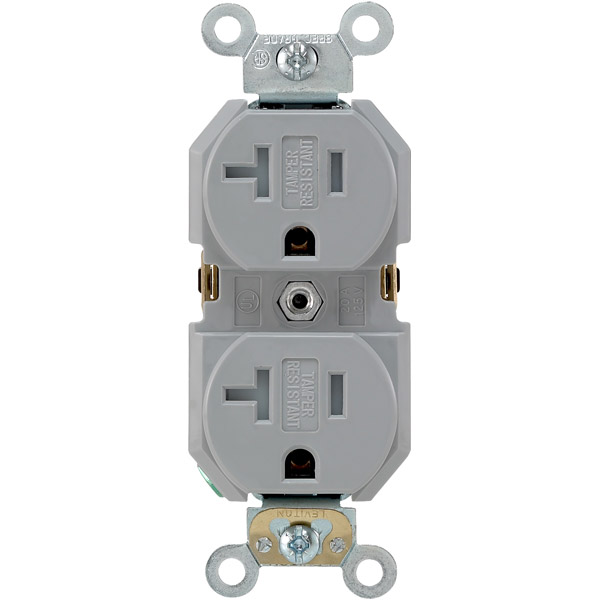Tamper-Resistant Receptacles
It is estimated that approximately 2,400 children suffer from electrical shock and burns in the home each year when they force foreign objects into unprotected electrical outlets. Installing tamper-resistant receptacles (TRRs), also called tamper-resistant outlets, are one way to safeguard young ones in the home to prevent serious injury.
Other forms of outlet protection are available, such as plastic coverings, but they can be easily removed by children and are therefore not labeled as tamper-resistant. A TRR is a type of electrical outlet that requires double-prong entry in order for a plug to enter. These devices were designed to prevent the accidental insertion of hairpins, keys, knives, paper clips, nails, screws, and other small objects, which can pose an electrical shock hazard. Home inspectors and homeowners can identify these outlets by looking for the letters “TR” imprinted on the surface, which means that they're tamper-resistant and have been tested to sustain periods of extended use and some forms of physical damage.

How TRRs Work
Inside the TRR outlet, there is a spring-loaded shutter mechanism which blocks single-prong entry. When using a grounded or ungrounded plug, (2-or 3-prong), the blades of the plug press both shutters against the spring. This combined force slides the shutters and opens the slots for electrical contact. When the plug is removed, the shutters close and re-cover the openings. With a TRR, be sure that the stems of the plug are not bent and that the plug is inserted as straight as possible. Slight maneuvering may be required, depending on the quality of the outlet. If there is an issue, the TRR may be defective and may need to be replaced.
NEC
For safety reasons, the 2008 National Electrical Code now requires new and renovated homes to have TRRs. All dwelling units using 125-volt, 15- and 20-ampere receptacles require the installation of tamper-resistant receptacles. The inclusion of TR-type receptacles in new construction and remodeling projects is not required in homes built prior to 2008, according the NEC, but the AHJ (authority having jurisdiction) for your community may have different requirements, so be sure to check with your permitting authority if you’re planning any electrical upgrades to your home.
Here is what the 2008 NEC says about TRRs:
A. All non-locking type 15A and 20A, 125V receptacles in the following areas of a dwelling unit must be listed as tamper-resistant:
- Wall space — 210.52(A)
- Small-appliance circuit — 210.52(B)
- Countertop space — 210.52(C)
- Bathroom area — 210.52(D)
- Outdoors— 210.52(E)
- Laundry area — 210.52(F)
- Garage and outbuildings — 210.52(G)
- Hallways— 210.52(H)
Exception: Receptacles in the following locations aren’t required to be tamper-resistant:
- Receptacles located more than 5½ feet above the floor.
- Receptacles that are part of a luminaire or appliance.
- A receptacle located within dedicated space for an appliance that in normal use isn’t easily moved from one place to another.
Non-grounding receptacles used for replacements as permitted in 406.4(D)(2)(a). Non-locking type 15A and 20A, 125V receptacles in guest rooms and guest suites must be listed as tamper-resistant [406.13]. In addition, non-locking type 15A and 20A, 125V receptacles in child care facilities must be listed as tamper-resistant [406.14].
In summary, tamper-resistant receptacles are the best way to prevent electrical injuries from outlets. Be sure to have your InterNACHI-Certified Professional Inspector® out to your home for your Annual Home Maintenance Inspection to check electrical and other potential safety issues, especially if you have young children.



